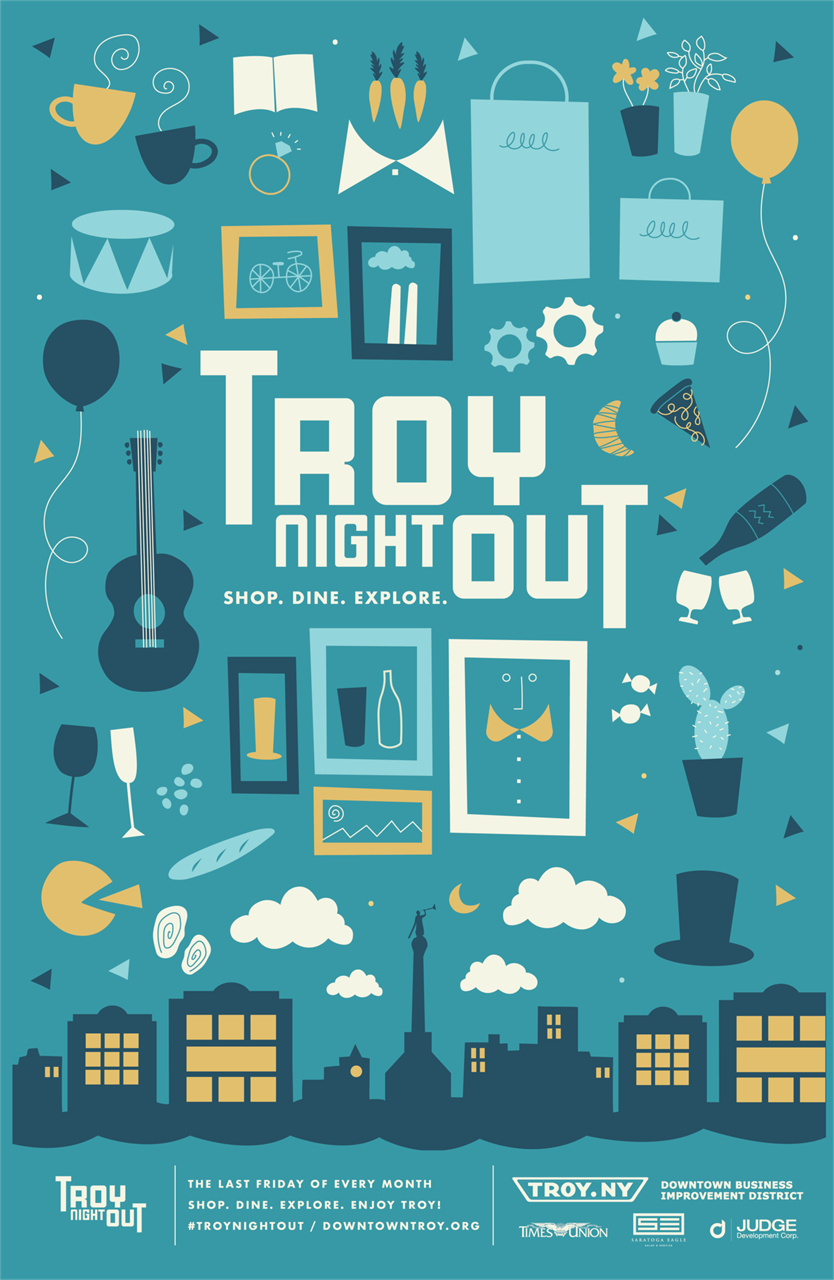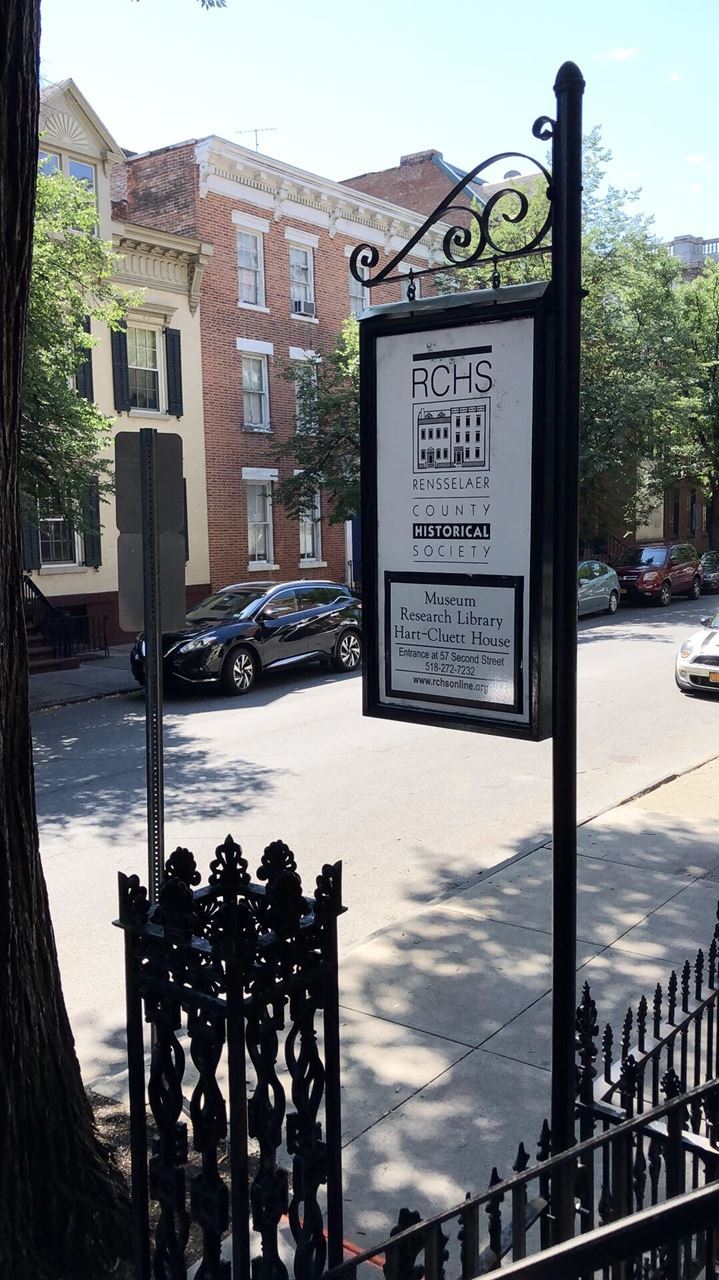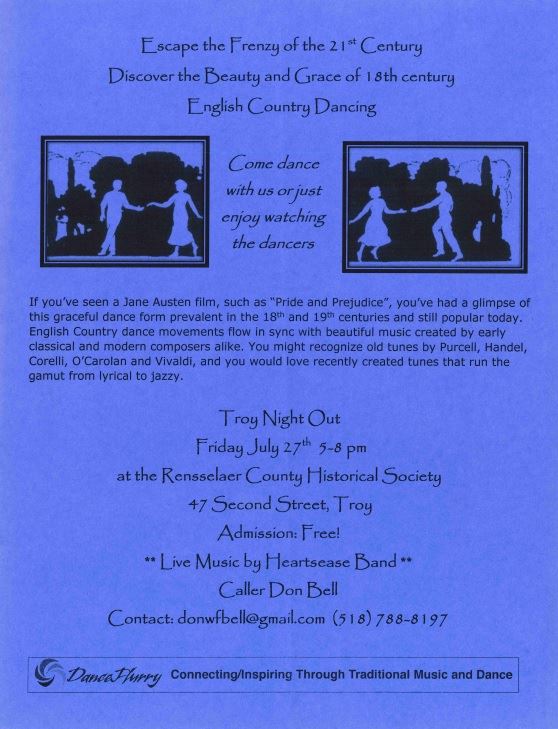Engaging an entire community can seem like a daunting task for some small museums and historical societies – not everyone has a strong passion for the work museums do, or they aren’t interested in what’s presented to them at face value. Sometimes, community members may not even know that there even are any cultural institutions right down the road from where they live.
At the Rensselaer County Historical Society (RCHS), located in downtown Troy, NY, the staff meets this challenge head-on. How do they do it? The answer is simple: they partner with their community to serve their community.

On the last Friday of every month, the city of Troy’s Business Improvement District – Troy BID – hosts Troy Night Out, an “arts and cultural event that regularly draws thousands of people onto the streets of Downtown Troy.” Every month, the Troy BID works with local venues, boutiques, restaurants, venues, and cultural institutions (like the RCHS) to increase foot traffic in Downtown Troy and bolster the successes of small businesses in the city.
Businesses will often offer special deals or events on Troy Night Out, which has a different theme every month. In June, the theme was “Carnival!” Locally loved restaurants and bars added carnival- and summer-themed specials to their menus, boutiques and shops handed out free balloons and snacks, and the RCHS hosted author and baseball historian David Rapp for a special discussion of his new book, Tinker to Evers to Chance: The Chicago Cubs and the Dawn of Modern America.
 The RCHS has been participating in Troy Night Out since its inception. Although only three percent of the RCHS’ funding comes from government sources – which means that the other 97 percent comes exclusively from fundraising and admission prices – RCHS Executive Director Karin Krasevac-Lenz says the Society still wanted to offer free admission during Troy Night Out. “We still felt it was appropriate, especially in a community that has a 41 percent poverty rate – which is what Downtown Troy has – that we have one night a month where everybody can come in, and we try to get that word out.”
The RCHS has been participating in Troy Night Out since its inception. Although only three percent of the RCHS’ funding comes from government sources – which means that the other 97 percent comes exclusively from fundraising and admission prices – RCHS Executive Director Karin Krasevac-Lenz says the Society still wanted to offer free admission during Troy Night Out. “We still felt it was appropriate, especially in a community that has a 41 percent poverty rate – which is what Downtown Troy has – that we have one night a month where everybody can come in, and we try to get that word out.”
No matter the theme of the month (July’s theme is “Where in Troy is Uncle Sam?”), Krasevac-Lenz says the RCHS always has something going on when Troy Night Out rolls around. Whether that’s a special micro-exhibit that ties in with the Troy Night Out theme or with a relevant event in Rensselaer County history, visitors can be assured that the RCHS will be participating. When the RCHS hosted the Capital Region Underground Railroad Conference, they displayed an exhibit on art of the Underground Railroad at the following Troy Night Out. And this month, they’re hosting a historical English line dancing class with Don Bell and the Heartsease Band. “We try to have something special every time to draw people in,” Krasevac-Lenz says.

In the two years Krasevac-Lenz has been with the RCHS, she says she’s seen how participating in Troy Night Out fulfills the organization’s core mission of serving their entire community – not just their members. When author David Rapp spoke in June about his new book on baseball history, the RCHS was packed full. “We had 88 people here, just for that,” Krasevac-Lenz says. “We kept saying, ‘No, get up! Look at the galleries, too!’”
By participating in Troy Night Out, the RCHS has opened their doors to members of the Troy community who may have otherwise never set foot in their local historical society. Krasevac-Lenz says that they’ve had visitors come in during Troy Night Out who have never been in a museum. “If they stay 15 minutes and they leave and say, ‘Eh…I don’t know,’ well, at least they’ve experienced a museum. We’ve gotten them in the door,” she says.
So, why should smaller museums get as involved in their communities as they can? Krasevac-Lenz says the most important facet of the RCHS’ mission – and the mission of cultural institutions as a whole – is to serve their community, both members and otherwise.
“The more you broaden your audience, the stronger your mission, and eventually, the stronger your organization is,” she says. “If you get 10 percent of those people to come back, or 10 percent of those people become members, you have now built a stronger foundation for your organization’s future.”
Words by Sarah Heikkinen. Photos by Sarah Heikkinen, RCHS, and Troy BID.
